
The Bells of St. Mary’s – 1945
The Bells of St. Mary’s was a like a glass of lemonade with so much sugar in it that it turns your stomach. It was incredibly unrealistic and even ridiculous. It was nowhere near believable in its treatment of characters and their motivations. And it was so overwhelmingly wholesome and good, it made Mother Theresa look like Atilla the Nun.
So where do I start? Well, the film starred Bing Crosby as Father O’Malley, the same character who he played in the previous year’s Best Picture winning film, Going My Way. He is the newly arrived Catholic Pastor at St. Mary’s School. There is a group of nuns teaching at the school, headed by Sister Superior, Sister Mary Benedict, played by Ingrid Bergman.
Sister Mary Benedict and Father O’Malley are sometimes at odds with each other about their methods of teaching the young, impressionable minds of the students. Nothing is ever bitter or mean-spirited, but they do disagree on occasion. So, because there was no serious conflict, most of the film was pretty bland.
But audiences didn’t care, because the plot epitomized the concept of “ideal Christian behavior.” It didn’t give us a story that was realistic. It gave us one that was fabricated to show us an image of what the world should be like. In a film, the action should serve the plot, but here the plot served the action. Conservative Christians want to see a grumpy old man become charitable. Let’s give it to them. They want to see a father who abandoned his wife and child reunite with them after 13 years, and become a responsible husband and father. Let’s give them that, too. How about two boys fighting on the playground, then shaking hands and becoming friends? Yeah, that’s great! Throw reality out the window and put that in there, too!
And, of course, you have Bing Crosby, so you also need several songs for him to sing… except that the songs were thrown in at completely random places, and were largely unmemorable, in any case. True, Crosby had a beautiful voice, but his singing had nothing to do with advancing either the plot or the emotional content of the film.
The Bells of St. Mary’s also broke the cardinal sin of movie-making. Cute for the sake of cute is never cute. Never. There was an entire random scene that had absolutely nothing to do with the plot or any subplot. A group of first-graders, who looked old enough to be in 3rd grade, performed a Christmas Pageant for O’Malley and Mary Benedict. There was no reason for it except to show people how cute children could be. Get rid of it.
And I’ll also take a moment here to give an example of why O’Malley was a horrible teacher. When Mary Benedict is forced to fail a student because of low marks, O’Malley puts pressure on her to fudge the results of the child’s test scores so that she can graduate with her class – because he really believes that the young Patricia, played by Joan Carrol, is a good person who just needs to be given the chance to succeed. No! First, the failing student learns nothing if she is given good marks she has not earned. Doing so ultimately hurts the student. Second, Mary Benedict argues that failing to uphold the school’s educational standards would tarnish the honor of the school. But O’Malley still tries to get her to lie for the sake of Patricia.
But despite his horrible judgment, his willingness to lie to spare a person’s feelings, and a questionable moral center, he is portrayed as a benevolent hero with a Midas-touch. He is able to manipulate Horace Bogardus, the grumpy old man who owns the modern building next door, played by Henry Travers, to donate his nice new facility to the church because he discovers the joy of generosity. That tiger changed his stripes after a lifetime of being selfish. Good work Father O’Malley!
The film’s only real, genuine emotional content, and consequently its only noteworthy acting, came at the end when Sister Mary Benedict is diagnosed with tuberculosis. Her doctor says that telling her of her illness will upset her and make her condition worse. Better to lie to her about her health and transfer her to a drier climate without telling her why. O’Malley does just that. Of course, the nun assumes that she is being sent away because of her disagreements with Father O’Malley, with whom she has developed a bond of mutual respect. She feels betrayed and hurt, and struggles with understanding and accepting the transfer. Her scene of tearful prayer was well-acted, but that was about the extent of the real drama of the movie.
And finally, I have to mention one little thing I found interesting. For a film that is overtly Catholic, a little omission was made that I didn’t understand. When the children are saying the Pledge of Allegiance, they went directly from “One Nation,” to “Indivisible,” skipping the line “Under God.” But my research set me straight, when I learned that the line wasn’t added to the statement of fealty to the flag until 1954. Who knew?
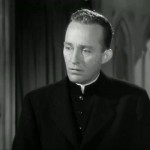
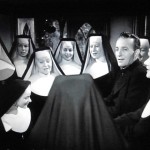
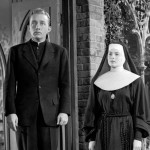
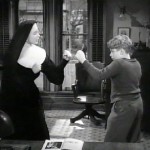
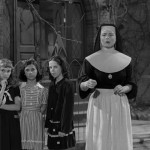
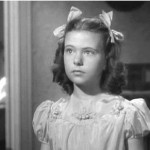
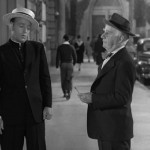

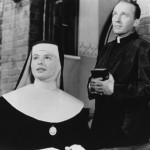
Just about everyone…….the Pledge of Allegiance added those 4 words in ‘54 in response to McCarthyism and the “fear” of communism that was indoctrinating America during that era. Your lack of historical knowledge is only surpassed by your lack of critical taste in film.
This movie is a Classic! The Bells of St. Mary’s is a true holiday gift for the whole family.